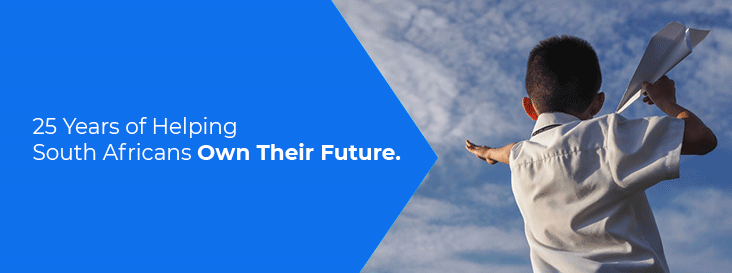Is violence always the answer? If you consider the fact that the Australian military once went to war with the native emu population (and lost), then the answer to that question is no, probably not.
Disclaimer: gentle reader, most times when I sit down to write this column, I do so with the aim to inspire a fresh perspective on business or finance, or to draw your attention to an interesting story with a relevant lesson. This article, however, has been written purely for the purposes of unabashed glee. You will probably learn nothing useful from this article, but you will come away with one very entertaining dinner table story.
Our story begins at the end of World War I
Australia’s involvement in the First World War had marked its most catastrophic conflict to date, with casualties exceeding those of the Second World War that would follow.
Approximately 210,000 Australians were affected, with 61,519 fatalities or deaths resulting from injuries. Given the nation’s population of less than five million at the time, these losses were severe. Numerous veterans returned home with incapacitating injuries, hindering their ability to secure employment.
Under mounting public pressure to assist returning veterans, the Australian government devised a dual-purpose solution: they would offer employment to veterans and contribute to the nation’s food supply at the same time. The strategy involved dividing the countryside into small parcels of land, encouraging veterans to take up farming.
Despite the enthusiasm of many thousands of veterans who accepted the challenge, the endeavour was fraught with difficulties from the start. The soil quality was generally poor, vermin posed a constant threat and most veterans lacked even basic farming experience. Furthermore, the allotted plots, which were typically around 10 acres each, proved inadequate for sustenance, let alone profitability. Nonetheless, numerous veterans were resettled across the country as part of this initiative.
Around 5,000 veterans were settled in Western Australia, where wheat was the crop most suitable to the conditions.
From bad to worse
By the mid-1920s, it became obvious that the veteran farming initiative was a terrible idea. Tens of thousands of farmers were plunged into poverty while struggling to produce even a meagre amount of food.
Under such dire circumstances, alcoholism and suicide rates soared. Throughout the decade, wheat prices collapsed, exacerbated by the 1929 American stock market crash, which precipitated the Great Depression in Australia (and worldwide) with devastating effect. Suddenly, already diminished wheat prices halved, and Australia’s unemployment rate surged to 32%. As if that wasn’t enough, a drought compounded the hardships.
A quarter of the resettled farmers in Western Australia abandoned their plots in frustration. Those who remained had no idea that their greatest hardship was still to come.
Enter 20,000 emus
Imagine being a novice farmer, trying your best to grow wheat in the unforgiving landscape of Western Australia. You’ve persevered through a steep learning curve, bad soil, a freak drought and empty promises of subsidies that never came. And then one morning you wake up to find your wheat fields covered in emus.
For those who are unfamiliar with emus, these are large flightless birds that are native to Australia. They have a similar look and build to the ostriches that we know so well, except that they are slightly smaller. Historically, Australia has had a bit of a love-hate relationship with the emu, alternating between classifying them as a protected species and vermin (probably depending on how much damage they were causing in a given period).
Driven by the drought, increasingly large flocks of emus were migrating to Western Australia, where they found themselves in stiff competition for resources with struggling farmers. They caused so much damage to wheat crops that by 1922, their protected status was once again dropped, and the government classified them as vermin to be exterminated. Farmers took matters into their own hands but failed to make a dent in the emu numbers, as the birds were so hardy that they needed to be shot multiple times before they would die.
Running low on ammunition and patience, the farmers turned to the government, who decided now was the time to involve the military.
Bring in the big guns
A group of former soldiers was dispatched to meet with Sir George Pearce, the Minister of Defence. Drawing from their experiences in World War I, these veterans understood the efficacy of machine guns and requested their deployment. Pearce readily agreed, and military involvement was slated to commence in October 1932. The operation was overseen by Major Gwynydd Purves Wynne-Aubrey Meredith of the Royal Australian Artillery’s 7th Heavy Artillery, who commanded Sergeant S. McMurray and Gunner J. O’Halloran. Armed with two Lewis guns and 10,000 rounds of ammunition, they went off to war.
Assisted by local farmers, they endeavoured to corral the emus into an ambush. However, contrary to their expectations, the birds didn’t flock together but instead scattered, evading easy targeting. Later that day, when they encountered a small group of emus, the soldiers made another attempt, yet with no better outcome. Two days later, Meredith and his team meticulously laid an ambush near a dam. They lay in wait as approximately 1,000 emus approached the water. At close range, the soldiers opened fire, but the Lewis machine gun jammed after a few rounds, allowing the emus to flee with minimal casualties.
Getting an accurate assessment of the emu casualties was another challenge, as many would flee into the bush before succumbing to their injuries. By the third day, only about 30 emus had been killed, hardly making a dent in the estimated 20,000-strong population. Subsequent days saw limited success as the emus adapted their tactics, splitting into smaller groups with lookout individuals while others continued their ravaging. Meredith and his men attempted to mount the Lewis machine gun on a truck, but the rough terrain hampered their efforts, rendering that plan ineffective.
Amidst mounting negative publicity and lacklustre progress, Meredith and his team were withdrawn from the operation on November 8. The official report cited approximately 300 emus killed during the campaign.
Summarising the first offensive of the war, ornithologist Dominic Serventy commented: “The machine-gunners’ dreams of point blank fire into serried masses of emus were soon dissipated. The emu command had evidently ordered guerrilla tactics, and its unwieldy army soon split up into innumerable small units that made use of the military equipment uneconomic. A crestfallen field force therefore withdrew from the combat area after about a month.”
An astonished Major Meredith compared the emus to Zulu warriors, proclaiming “If we had a military division with the bullet-carrying capacity of these birds it would face any army in the world. They can face machine guns with the invulnerability of tanks”.
A victory of sorts
Following the military’s withdrawal, emu crop raids persisted. By November 12, the Minister of Defence authorised a renewed military effort, and Major Meredith was sent back into the field.
Initial progress was seen over the first two days, resulting in approximately 40 emus killed. However, the third day, November 15, saw a significant drop in success. Nonetheless, by December 2, soldiers were averaging around 100 emu kills per week. Meredith was recalled on December 10, and in his report, he documented 986 confirmed kills using 9,860 rounds, equating to precisely 10 rounds per confirmed kill. Additionally, Meredith reported that exactly 2,500 wounded emus had succumbed to their injuries.
The exactness of his numbers hints at over exaggeration, but even so, using more than 10,000 rounds of ammunition to kill less than 3,500 (flightless) birds hardly feels like a sweeping victory.
Despite the challenges faced during the culling operations, farmers in the region once again sought military aid in 1934, 1943 and 1948, only to have their requests denied by the government. Instead, the bounty system implemented in 1923 remained in place, and its effectiveness became evident: over a six-month period in 1934, 57,034 bounties were claimed. The larger issue was eventually resolved with the implementation of stronger barrier fencing, effectively preventing emus from entering farmers’ fields.
Although no emus were present to endorse the agreement, a truce was officially declared in 1999, when emus were once again designated as a protected species. Despite the eventual effect of their numbers, the emus are widely regarded as the victors of the Great Emu War of 1932.
And you thought that the spiders were the most frightening things in Australia, didn’t you?
About the author:

Dominique Olivier is a fine arts graduate who recently learnt what HEPS means. Although she’s really enjoying learning about the markets, she still doesn’t regret studying art instead.
She brings her love of storytelling and trivia to Ghost Mail, with The Finance Ghost adding a sprinkling of investment knowledge to her work.
Dominique is a freelance writer at Wordy Girl Writes and can be reached on LinkedIn here.




